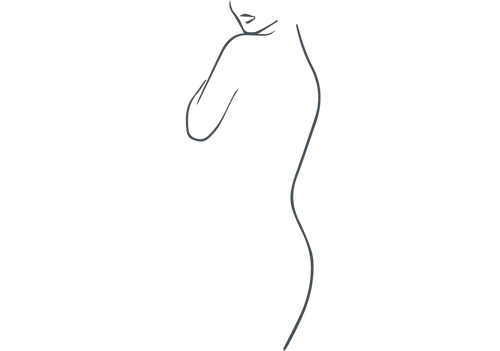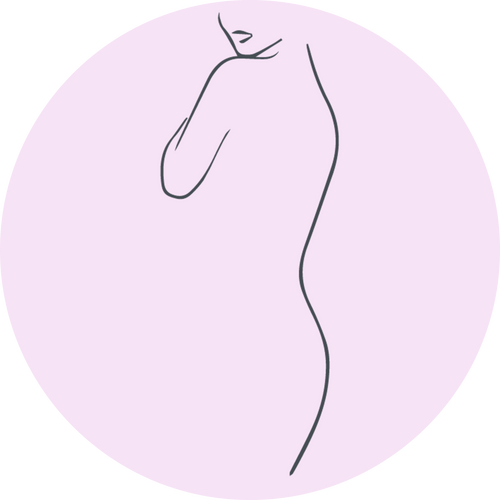STRAIGHT, CROSS & BIAS GRAIN
When working with sewing patterns, it is crucial to understand the significance of thread direction. Each sewing pattern is designed with specific markings that indicate the direction of the straight thread, which is essential for achieving the desired fit and functionality of the garment.
The lengthwise grain (straight thread) of a fabric runs parallel to its selvage, which is the finished edge of the fabric. This orientation is crucial for several reasons. Sewing along the lengthwise grain provides the most stability and strength to the seams. Fabrics tend to stretch more across the width than along the length, making lengthwise seams less prone to distortion and wear over time. Studies indicate that seams aligned with the lengthwise grain can maintain their integrity under stress, reducing the likelihood of fabric sagging or seam failure.

Bias grain refers to the diagonal direction of fabric, which is at a 45-degree angle to the warp and weft threads. This orientation is crucial in garment construction, particularly in the creation of fitted and flowing designs. When fabric is cut on the bias, it possesses unique properties that enhance the drape and fit of the garment.
One of the primary advantages of using bias grain is its ability to stretch. Unlike fabric cut along the straight grain, which has limited or 0% elasticity, bias-cut pieces can conform to the body's curves. This characteristic is particularly beneficial in lingerie design, where comfort and fit are paramount. Studies indicate that garments cut on the bias can provide up to 20% more stretch compared to those cut on the straight grain.
DIRECTION OF THE GREATEST STRETCH
In addition to the straight thread direction, lingerie patterns often include markings for the direction of stretch. This is particularly important for fabrics that have elastic properties, such as spandex or elastane blends. The stretch direction indicates how the fabric will expand and contract, which is critical for ensuring that the garment fits snugly without being restrictive. When sewing underwear, it is essential to cut the fabric pieces in accordance with the stretch direction to maximize comfort and functionality.
To determine the stretch direction, you can perform a simple test by gently pulling on the fabric. The direction in which the fabric stretches the most is the stretch direction. This information should be clearly indicated on the pattern, allowing sewists to align their fabric accordingly. Failure to adhere to these directional markings can result in garments that do not fit properly or that do not perform as intended. Stretch lace is a popular material in the lingerie industry, known for its unique properties that enhance both the aesthetic and functional aspects of intimate apparel. One of the most significant characteristics of stretch lace is its ability to provide more stretch in the longwise direction unlike most fabrics.
Stretch lace is a popular material in the lingerie industry, known for its unique properties that enhance both the aesthetic and functional aspects of intimate apparel. One of the most significant characteristics of stretch lace is its ability to provide more stretch in the longwise direction unlike most fabrics.
STRETCH PERCENTAGE
Determining the stretch percentage of fabric manually is a straightforward process that can greatly enhance the quality of your sewing projects. By understanding the stretch characteristics of your fabric, you can make informed decisions that lead to better fitting and more comfortable lingerie designs. This knowledge empowers you to create custom pieces that meet your specific needs and preferences.
Step 1: Measure the Original Length
Begin by measuring a specific length of the fabric in its relaxed state. For accuracy, a length of 10-25 cm (4-10 in) is recommended. Use the ruler or measuring tape to mark this length clearly on the fabric.
Step 2: Stretch the Fabric
Next, gently stretch the fabric to its maximum length without causing damage. It is important to apply even tension across the entire length to ensure accurate results. Measure the new length of the fabric while it is still stretched. Record this measurement.
Step 3: Calculate the Stretch Percentage
The stretch percentage can be calculated using the following formula:
Stretch Percentage = [(Stretched Length - Original Length) / Original Length] x 100
For example, if the original length is 10 cm and the stretched length is 12 cm, the calculation would be:
Stretch Percentage = [(12 - 10) / 10] x 100 = 20%
Step 4: Interpret the Results
A stretch percentage of 0% indicates no stretch, while a higher percentage indicates greater elasticity. Fabrics with a stretch percentage of 10-20% are generally considered low stretch, 20-50% medium stretch, and over 50% high stretch. This classification can help in selecting appropriate patterns and techniques for sewing lingerie.
AMOUNT OF FABRIC NEEDED
When purchasing fabric, it is essential to consider the fabric's width, as this can impact the amount needed for your project. For example, a wider fabric may require less meterage/yardage to achieve the same design compared to a narrower fabric. Always consult the pattern specifications to determine the correct amount of fabric required.
Fabric is typically sold in various cuts, including fat quarters, fat eighths, and more. This guide will provide an overview of most common fabric cuts, detailing both metric and imperial measurements.

A fat quarter is a popular cut of fabric and it is derived from a meter/yard of fabric, which is cut in half lengthwise and then across the width, resulting in a rectangular piece that is easier to work with.
Another common cut is the fat eighth, which is created by cutting a fat quarter of fabric in half across the width or cutting a quarter meter/yard of fabric in half (fat skinny eighth), still yielding a manageable size for small lingerie details and different applications.
In addition to these cuts, fabric can also be purchased in traditional meterage/yardage. A meter of fabric is equal to 100 cm and a yard of fabric measures 36 inches (91.44 cm) in length. The width of fabric can vary, for clothing purposes typically ranging between 112cm and 140cm (44 inches and 55 inches). Understanding these measurements is crucial for accurate calculations when planning your sewing projects.
DIRECTIONAL & NON-DIRECTIONAL PRINT / NAP
Directional prints (one-way prints) are those that have a specific orientation. This means that the design elements are intended to be viewed from a particular angle. For instance, a fabric featuring a floral pattern that is designed to be upright is considered directional. When working with directional prints, it is crucial to ensure that all pattern pieces are cut in the same direction to maintain the integrity of the design. Failure to do so can result in mismatched patterns and an unprofessional appearance.
On the other hand, non-directional prints (also two-way and multi-way prints) do not have a specific orientation. Patterns such as polka dots, stripes, or abstract designs can be viewed from different angles without compromising the visual appeal of the fabric. This versatility allows for greater flexibility in cutting and sewing, as the pattern pieces can be arranged in various orientations without concern for alignment. Non-directional prints are often favored for their ease of use, particularly for beginners or those looking to streamline the sewing process.
Directional nap refers to the texture and appearance of fabric that changes depending on the direction in which it is brushed or stroked. This phenomenon is particularly significant in textiles such as velvet, suede, and certain types of plush fabrics. The nap can create a visual and tactile difference that affects the overall aesthetic and feel of the material.
When working with directional nap fabrics, it is essential to consider the orientation of the nap during the cutting and sewing process. Fabrics with a nap should be cut in the same direction to ensure a uniform appearance. If pieces are cut in different directions, the fabric may appear mismatched, leading to an undesirable outcome.

MIRRORED PRINT
When it comes to lingerie designing and sewing, one particularly important aspect is the use of fabrics with mirrored prints, which can significantly enhance the visual appeal and symmetry of the project. Mirrored prints are characterized by their symmetrical patterns, which can create a harmonious and balanced look when applied to lingerie. The human eye is naturally drawn to symmetry, and incorporating mirrored prints can elevate the design by providing a sense of order and elegance.


